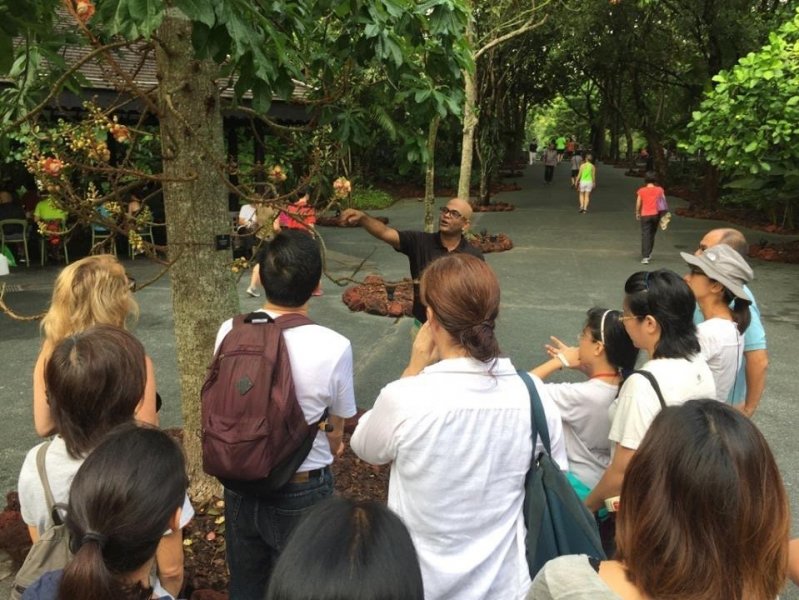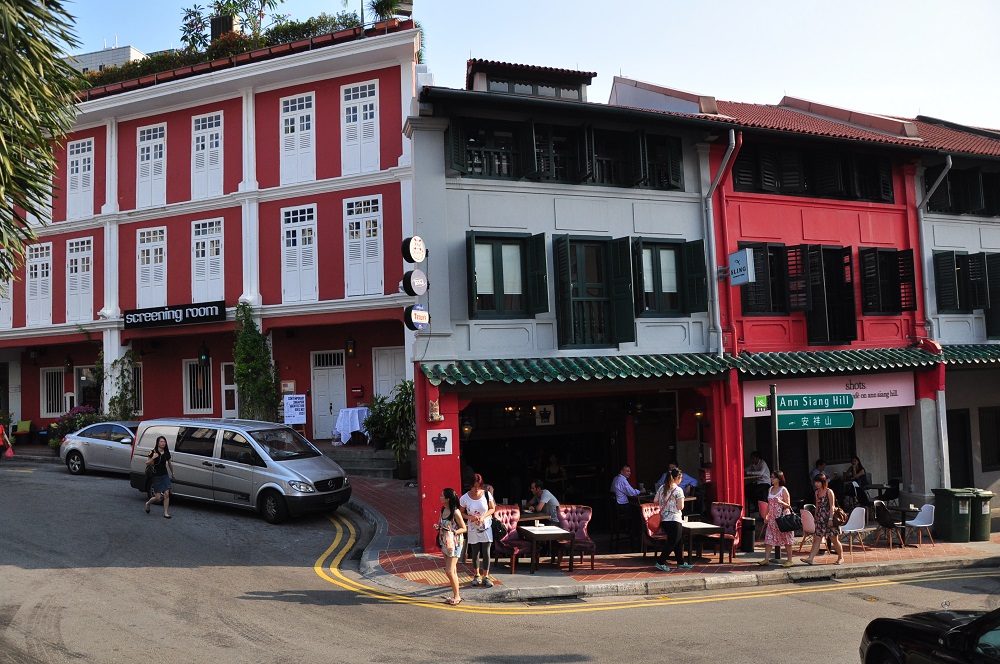Singaporeans have a love-hate relationship with nature. While many of us are gung-ho about going on the next MacRitchie hike, many are also quick to react badly when nature comes a little too close. Carl Baptista is out to change that. The co-founder of Pollen Nation, Baptista is leading a movement to encourage coexistence with some important members of Singapore’s eco-system: bees. Here, he discusses his journey from insect exterminator to conservationist and tells us why we should all take an interest in Singapore’s biodiversity.
Pest control is the business my family is in, so when I left university, I immediately began work there. My very first pest control job was to kill rats, cockroaches and mosquitoes. My appreciation and respect for insects grew there.
I learned that even the humblest, most abhorred insects have something beneficial to offer mankind. For instance, I pioneered a breeding program for sterile maggots from houseflies to help in the treatment of festering wounds at our local hospitals.
Here’s the irony: I was an insect killer by trade, and now I am trying to save insects.
I crossed over into bee conservation mainly because Singaporeans have a fear of bees. Bees are not the apex predators of the urban environment. they are beneficial insects that should be conserved. It’s simple. If they are gone, we are gone!
With all due respect to those working to protect otters and monkeys, if we forget about the pollinating insects at the lowest end of the food chain, conserving these higher animals won’t make an iota of difference because their food sources will disappear.
We look at ways to conserve bee species through working with the government, schools, public spaces and the general public.
There’s no point having a “green building” when you call a pest control company to wipe out every hive you see. We want to help folks find ways to coexist with these wonderful species, to say, “Look, these bees are helping to pollinate our landscape!” and not “Look! Bees! Run!”
Colony collapse disorder is not that big an issue for Singapore per se. But we depend on our neighbors for our food and fruits, and when colony collapse disorder becomes a problem in their countries, and bees are unable to pollinate their crops, we will see a decline in food production.
Singapore’s culture of culling and exterminating wildlife is abhorrent! However, without knowledge and concrete coexistence strategies, Singaporeans will usually err on the side of kiasu and kill it.
Occasionally, bees will set up hives in man-made structures or swarms will freely form on branches and in bushes. We provide a service that removes these bees without killing them. Some species of bees will be removed for free, other more dangerous projects have cost over $1,000.
I was stung more than 70 times by Apis dorsata bees during a bee-vacuation – a killer bee species. To say it hurt was an understatement. And for a while, I sounded like Sylvester Stallone after one of his fights in Rocky.

For the public, we do Pollination Trails. We conduct tours of parks in Singapore that have active beehives for people to observe pollination by different Singaporean bees. These are conducted at the Singapore Botanic Gardens amongst other locations.
For conservation, we have adopt-a-beehive programmes for schools and honey appreciation events for businesses. We even teach schools and businesses how to plant a Bee Oasis in their communities. It’s a heart-shaped planter box filled with nectar-producing bee plants for bees to stop off on their journeys.
At honey appreciation events, attendees will learn about bees and how they make honey. They will understand why honey has so many medicinal properties and how to differentiate the real and fake honeys. We only celebrate sustainably-sourced raw honey from cottage industry beekeepers in the region. This comes as a surprise to many people who are more used to store-bought adulterated or infused honeys, or the world-famous manuka.
Currently, we have ten different honeys from three different species of bees, harvested from eight different types of tropical crops. Ever tried honey from durian, starfruit or honey dew flowers? You should see the look on people’s faces when they try stingless bee honey! It has a very citrusy, lemonade-y flavor, so it is an acquired taste.
We do not have Singapore honey at the moment, but there are plans in the pipeline to introduce this as we develop a critical mass of stingless bee hives here.
I think the movement to promote Singaporean produce is great. This promotes entrepreneurship, reduces our carbon footprint and fosters patriotism.
Food prices are rising and the weather is getting unpredictable, threatening regional harvests. Any homegrown effort to provide more food sources for our tiny island is a very good thing. Many of our friends are urban farmers themselves, trading best practices on Facebook for raising that healthy flower or ginger crop even in high rise apartments!
At the moment, the bees are our ambassadors as they do the lion’s share of pollination activities in Singapore – more than 66% of all pollination in parks in Singapore is done by bees. We will eventually develop coexistence programs for other insects beneficial to Singapore including ladybirds, butterflies and – if we dream big enough – even fireflies!
We want to spread our message to Singapore that coexistence creates sustainability. We want Singaporeans to celebrate the precious biodiversity we have here, and the tiny insects who make it possible.
Think about it, bees have found a way to coexist with man – they can find homes in cracks in our buildings and we’ve even seen cases of hives in a toilet! Surely, we humans can find ways to coexist with them, too.





